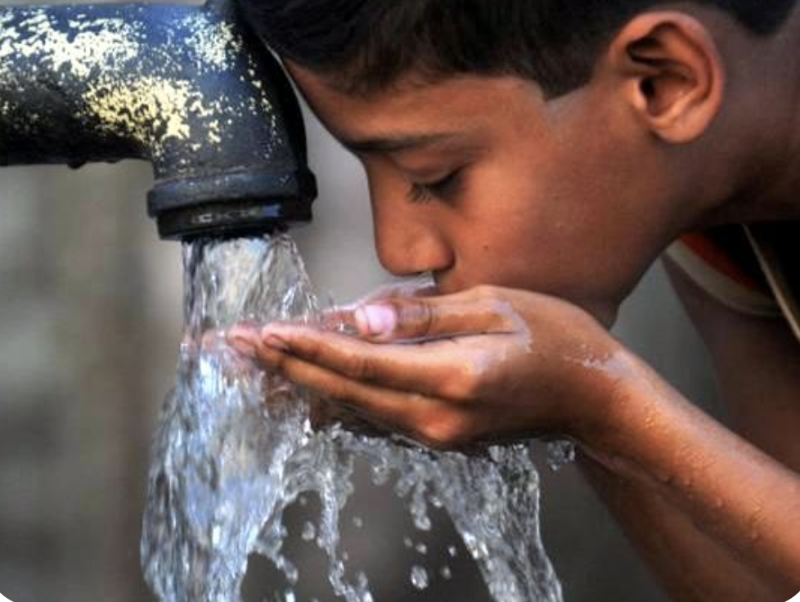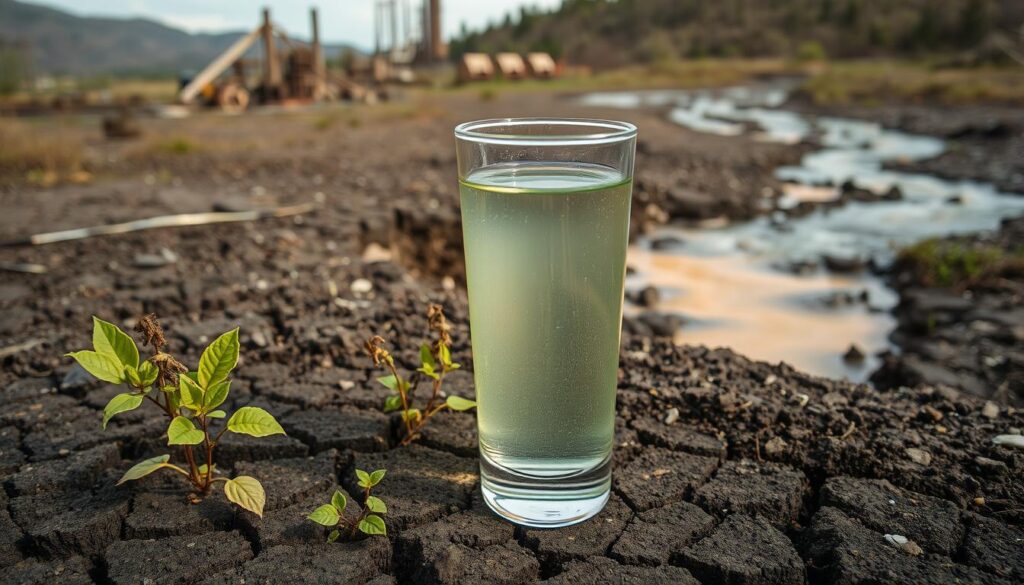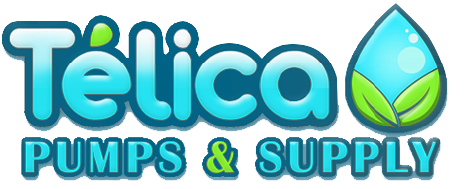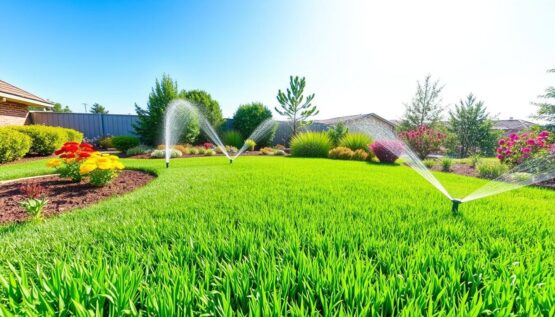
Did you know over 200 million people worldwide drink water with unsafe arsenic levels? This fact shows how big the problem of arsenic contamination is. Arsenic is a harmful element found naturally in groundwater and also comes from industrial and farming activities. Drinking water with arsenic can cause skin problems, heart diseases, and even some cancers.

But there’s good news. Water purification systems can take out arsenic and other harmful stuff. This means you and your family can have clean drinking water. Getting a good water purification system can lower your risk of health problems from arsenic. It also gives you peace of mind knowing your water is safe.
In this article, we’ll talk about how arsenic affects health, why water purification is key, and the tech that removes arsenic. We’ll also clear up common myths about arsenic and water treatment. This will help you make smart choices about your drinking water.
Key Takeaways
- Arsenic contamination in drinking water poses serious health risks
- Water purification systems can effectively remove arsenic and ensure clean drinking water
- Various technologies are available for arsenic removal, including reverse osmosis and activated alumina adsorption
- Addressing misconceptions about arsenic contamination and water treatment is crucial for informed decision-making
- Investing in a reliable water purification system can significantly reduce the risk of arsenic-related health issues
Understanding Arsenic Contamination in Water Sources
Arsenic in water is a big problem worldwide, affecting millions. To tackle this, we need to know where arsenic comes from and how it gets into our water. Understanding this helps us find ways to keep our water safe for everyone.

Natural Occurrence of Arsenic in Groundwater
Arsenic is naturally found in the Earth’s crust. It can get into groundwater through weathering and erosion. The type of rocks and soil in an area affects how much arsenic gets into the water.
In places like the Bengal Basin, arsenic levels are very high. This is because the area’s geology makes it prone to arsenic contamination. Millions there drink water with dangerous arsenic levels, causing health issues.
Industrial and Agricultural Contributions to Arsenic Pollution
Human activities also add to arsenic in water. Mining and chemical production release arsenic into the environment. This can pollute both surface and groundwater, posing risks to nearby communities.
Agriculture has also contributed to arsenic contamination. Old pesticides with arsenic are still in the soil. They can leach into water, adding to arsenic levels in the environment.
| Source of Contamination | Potential Impact |
|---|---|
| Natural occurrence in rocks and minerals | Elevated arsenic levels in groundwater |
| Industrial waste discharge | Contamination of surface water and groundwater |
| Mining operations | Release of arsenic into the environment |
| Agricultural runoff (arsenic-based pesticides) | Accumulation in soil and water sources |
Knowing where arsenic comes from helps us fight it. We can improve waste disposal, use better farming methods, and clean water. Testing water regularly is also key to keeping it safe.
Health Risks Associated with Arsenic Exposure
Arsenic in water is a big health risk. It can harm many parts of the body. Knowing the dangers and how to avoid them is key.
Acute and Chronic Health Effects
High levels of arsenic can cause sudden poisoning. Symptoms include stomach pain, vomiting, and diarrhea. In severe cases, it can lead to shock and organ failure.
Long-term exposure can cause many health issues. These include skin problems, nerve damage, heart disease, breathing issues, and stomach problems.
Increased Risk of Certain Cancers
Long-term arsenic exposure raises cancer risk. It damages DNA and can cause tumors. The cancers most linked to arsenic are skin, bladder, lung, kidney, and liver cancers.
“The International Agency for Research on Cancer (IARC) has classified arsenic and inorganic arsenic compounds as Group 1 carcinogens, indicating sufficient evidence of carcinogenicity in humans.”
Impact on Child Development and Pregnancy
Arsenic exposure in pregnancy and early childhood can harm health. It can lead to low birth weight, preterm birth, and birth defects.
In children, arsenic can affect brain development. It can cause learning and behavior problems. Studies show arsenic-exposed kids may have lower IQs and memory issues.

| Arsenic Exposure Level | Potential Health Effects |
|---|---|
| Acute high-level exposure | Abdominal pain, vomiting, diarrhea, shock, organ failure |
| Chronic low-level exposure | Skin disorders, peripheral neuropathy, cardiovascular diseases, respiratory issues, gastrointestinal problems |
| Long-term exposure | Increased risk of skin, bladder, lung, kidney, and liver cancer |
| Prenatal exposure | Low birth weight, preterm delivery, congenital malformations |
| Childhood exposure | Impaired cognitive development, learning difficulties, behavioral problems |
It’s crucial to know the dangers of arsenic. We must ensure safe drinking water. Testing water, using purification systems, and following regulations are key steps.
Identifying Arsenic Contamination in Your Water Supply
Arsenic in drinking water is a big health risk. It’s important to find out if your water has arsenic to keep your family safe. Knowing the signs of arsenic poisoning and testing your water often can help protect you.
Signs and Symptoms of Arsenic Poisoning
Arsenic poisoning can show in many ways, slowly over time. Common signs include:
- Skin changes, like dark spots and thick skin on palms and soles
- Stomach problems, like pain, nausea, vomiting, and diarrhea
- Neurological issues, such as numbness, tingling, muscle weakness, and cramps
- Feeling tired and weak
- Unexplained weight loss
If you notice these symptoms and think your water might be contaminated, get medical help and test your water right away.
Testing Your Water for Arsenic Levels
To find out if your water has arsenic, you need to test it. There are a few ways to do this:
- Certified labs: Health departments and private labs can test your water. They use special equipment to measure arsenic levels.
- Home test kits: You can buy kits to test your water at home. These kits are easy to use and give quick results.
- Water treatment companies: Some companies test your water for free or a low cost. They can tell you if your water needs treatment.
When testing your water, follow the instructions closely. Make sure to collect the sample correctly for accurate results. If your water has high arsenic levels, act fast to reduce your exposure.
“Regular water quality testing is the key to identifying arsenic contamination and protecting the health of your family. Don’t wait until symptoms appear; be proactive and test your water today.”
By testing your water often, you can keep your family healthy. Remember, it’s easier to prevent arsenic exposure than to treat it after it happens.
The Importance of Water Purification Systems
Having safe drinking water is a basic human right and key to public health. Yet, many water sources worldwide are tainted with harmful stuff like arsenic, lead, and bacteria. These can lead to serious health issues, from acute poisoning to chronic diseases like cancer. Water purification systems are a reliable way to ensure clean drinking water for homes.
These systems remove many contaminants from water, making it safe for drinking. They use technologies like reverse osmosis, activated carbon, and ultraviolet disinfection. With a water purification system, families can rest easy knowing their water is clean and safe.
Water purification systems are more than just for homes. They’re also crucial for public health, stopping the spread of water-borne diseases. Without safe drinking water, diseases like cholera and typhoid fever can spread fast. Community-level water treatment can greatly reduce these risks, improving health for everyone.
“Access to safe water is a fundamental human need and, therefore, a basic human right. Contaminated water jeopardizes both the physical and social health of all people. It is an affront to human dignity.” – Kofi Annan, former Secretary-General of the United Nations
When picking a water purification system, think about your water’s contaminants, household size, and budget. Look for systems certified by NSF International or the Water Quality Association. These certifications mean the system has been tested and proven to remove specific contaminants.
| Contaminant | Potential Health Effects | Removal Method |
|---|---|---|
| Arsenic | Cancer, skin lesions, neurological disorders | Reverse osmosis, activated alumina |
| Lead | Developmental delays, kidney damage, cardiovascular issues | Activated carbon, reverse osmosis |
| Bacteria (e.g., E. coli) | Gastrointestinal illness, diarrhea, vomiting | Ultraviolet disinfection, chlorination |
In conclusion, water purification systems are vital for safe drinking water and public health. They remove harmful contaminants, preventing diseases and giving families peace of mind. Investing in a reliable system is a smart choice for your family’s and community’s health.
Different Types of Water Purification Systems
Choosing the right water purification system is key to protecting your family from arsenic. There are many types of systems, each with its own strengths. We’ll look at three main methods: reverse osmosis, activated alumina adsorption, and ion exchange technology.
Reverse Osmosis Filtration
Reverse osmosis (RO) filtration is a common method for removing arsenic. It uses a semi-permeable membrane to filter out impurities. This process can remove up to 99% of arsenic, making it very effective.
Activated Alumina Adsorption
Activated alumina adsorption is another effective method. It uses a bed of activated alumina to adsorb arsenic. This technology is great for areas with high arsenic levels, as it can handle large volumes of water.
Ion Exchange Technology
Ion exchange technology removes arsenic by exchanging it with harmless ions. It uses a resin bed to trap arsenic ions. While it’s effective, it might need pre-treatment to remove other contaminants. Still, it’s a popular choice for its efficiency and reliability.
| Water Filtration Technology | Arsenic Removal Efficiency | Maintenance Requirements |
|---|---|---|
| Reverse Osmosis | Up to 99% | Regular membrane replacement |
| Activated Alumina Adsorption | Up to 95% | Periodic media replacement |
| Ion Exchange | Up to 90% | Resin bed regeneration or replacement |
When picking a water purification system, think about the arsenic level in your water, your budget, and maintenance needs. Knowing about different methods helps you choose the best one for your family’s safety and health.
Choosing the Right Water Purification System for Your Home
Choosing a water purification system for your home involves several key factors. You need to assess your water quality and see how well the system removes contaminants like arsenic. Understanding maintenance needs is also crucial. This way, you can pick the best system for safe, clean drinking water.
Factors to Consider When Selecting a System
Start by testing your water for contaminants, including arsenic. This helps you find a system that effectively removes these issues. Knowing your water quality is the first step in making a good choice.
Consider the system’s capacity and flow rate. This tells you how much water it can purify and how fast. It’s especially important for big families or those who use a lot of water. Also, check if the system can remove arsenic and other contaminants well.
Maintenance and Replacement Requirements
Think about the system’s maintenance and replacement needs over time. Some systems, like reverse osmosis, need regular filter changes and cleaning. This keeps them working well and removing contaminants.
How often you need to replace filters depends on the system and your water. Remember these costs when planning your budget. Regular maintenance ensures your system keeps providing clean water and removes arsenic and other contaminants.
| Water Purification System | Filter Replacement Frequency | Maintenance Requirements |
|---|---|---|
| Reverse Osmosis | Every 6-12 months | Membrane cleaning, filter replacements |
| Activated Alumina | Every 1-2 years | Media replacement |
| Ion Exchange | Every 2-5 years | Resin replacement, regeneration |
Choosing the right system can be tricky. Talking to a water treatment expert or a trusted provider can help. They can guide you on the best arsenic removal technologies and maintenance needs. With their help, you can make a smart choice and have peace of mind knowing your water is safe.
The Role of Government Regulations in Ensuring Safe Drinking Water
Government rules are key to keeping our drinking water safe. The Safe Drinking Water Act, enforced by the Environmental Protection Agency (EPA), sets standards for water quality. It includes rules for arsenic levels in public water systems.
These EPA rules make sure water providers follow strict guidelines. This ensures safe drinking water for everyone.
EPA Standards for Arsenic in Drinking Water
The EPA has set a maximum contaminant level for arsenic in water at 10 parts per billion (ppb). This rule is to protect us from health risks like cancer and developmental problems. Public water systems must test their water often to meet these EPA standards.
State and Local Government Responsibilities
While the EPA sets national standards, states and local governments enforce them. They make sure public water systems meet quality standards. States might also have their own rules that are stricter than federal ones.
Local water authorities are in charge of testing the water and telling the public about its quality. They also take action if the water doesn’t meet EPA standards.
People can find out about their water quality by looking at local reports. These reports tell you about the contaminants in your water and any problems. Together, federal, state, and local governments work to keep our drinking water safe from arsenic.
Community Initiatives to Address Arsenic Contamination
Community efforts are key in tackling arsenic contamination and making sure everyone has safe drinking water. These projects bring together local governments, non-profits, and community members. They focus on spreading the word about arsenic dangers and its health effects. Through public education and stakeholder engagement, they work towards finding lasting solutions for clean water.
A great example is arsenic awareness campaigns. These campaigns teach people about arsenic risks and why testing and treating water is crucial. They use workshops, educational materials, and partnerships with schools and healthcare to reach more people. This way, they help spread knowledge and motivate action in the community.
Community water projects are also vital in fighting arsenic contamination. These projects might include setting up water treatment systems or finding new water sources. Success depends on community support and the help of local agencies and non-profits. Through collaborative water management, communities can achieve long-term goals of safe drinking water for everyone.
“When communities come together to address arsenic contamination, they have the power to create lasting change and protect the health of current and future generations.” – Sarah Thompson, Director of Clean Water Action
Community initiatives do more than just solve immediate problems. They build a sense of community responsibility for water resources. This leads to more people getting involved in water conservation and protection. Successful projects also inspire other communities to take action, aiming for safe and clean drinking water for all.
Myths and Misconceptions about Arsenic Contamination and Water Treatment
Many myths and misconceptions about arsenic in water sources still confuse people. It’s important to clear up these misunderstandings. This way, everyone can understand the risks of arsenic and how water systems can remove it.
Debunking Common Myths
One myth is that all water is naturally free of arsenic. But, arsenic can be found in both groundwater and surface water. Natural and human activities can add to arsenic in water.
Another myth is that boiling water removes arsenic. Boiling kills bacteria but doesn’t get rid of arsenic. In fact, boiling can make arsenic levels worse. Only special water systems can remove arsenic effectively.
Addressing Misconceptions about Water Purification Systems
Some think all water systems remove arsenic equally well. But, their effectiveness varies. It’s crucial to pick a system certified for arsenic removal.
Another myth is that systems are only needed for wells or areas with known contamination. But, arsenic can be in water anywhere in the U.S. Even public water systems should be tested. Installing a system can offer extra protection.
Some believe a system is a one-time fix that needs no upkeep. But, regular maintenance and filter changes are vital. Without it, the system’s effectiveness can drop, putting people at risk.
By clearing up these myths, we help people make better choices about their water. Testing, choosing the right system, and maintaining it are key. This ensures safe, arsenic-free water for everyone in the U.S.
The Future of Arsenic Mitigation and Water Treatment Technologies
Researchers and water treatment experts are working hard to solve the arsenic problem in water. They are looking into new ways to make water safe for everyone. New technologies like nanotechnology, biosensors, and better water management are showing great promise.
Emerging Technologies for Arsenic Removal
Nanotechnology is changing how we treat water. It uses tiny particles to grab arsenic from water. These tiny adsorbents are very good at removing arsenic, making water safer.
Advanced nano-membranes are also being developed. They let water pass through but keep arsenic out. This makes water treatment more effective and cheaper, helping more people get safe water.
Biosensors are another exciting tool. They use living things to detect arsenic in water. This lets us quickly check water quality and fix problems fast. Biosensors help us make sure everyone has access to safe drinking water.
Sustainable Water Management Practices
Technology is key, but we also need to manage water better. Saving water and fixing leaks helps keep groundwater clean. This reduces the chance of arsenic getting into our water.
Using rainwater and recycling wastewater are also good ideas. They give us more water without harming the environment. This helps us use less groundwater and keeps our water sources safe.
The future of clean water depends on new tech and smart water use. By combining these, we can make sure everyone has safe drinking water. We need to keep working together to solve the arsenic problem and protect our water for the future.
Conclusion
Arsenic in drinking water is a big health risk. It can cause cancer and harm development. To keep water safe, we must all act together.
Water filters that remove arsenic are key. They help protect us from this harmful substance. Regular upkeep of these systems is important for our health.
Fixing arsenic in water needs everyone’s help. We need awareness, community efforts, and strong rules. New tech and better water management are on the way.
Let’s make sure everyone has clean water. This is our duty to future generations. Together, we can achieve a healthier world.
FAQ
What is arsenic contamination, and how does it affect health?
Arsenic contamination means toxic arsenic is in water. It can cause skin problems, heart diseases, and some cancers. It also affects child growth and can harm pregnant women.
How does arsenic contamination occur in water sources?
Arsenic can get into water naturally from rocks and minerals. Human actions like industrial waste and pesticides also add to it.
How can I tell if my water is contaminated with arsenic?
Look out for skin changes, stomach issues, and brain problems. The best way to know is to test your water with a certified lab or a home kit.
Why are water purification systems important for removing arsenic?
These systems are key for clean drinking water. They remove arsenic and other harmful stuff. This keeps families safe, especially in areas with bad water.
What types of water purification systems are effective for removing arsenic?
Reverse osmosis, activated alumina, and ion exchange systems work well. Reverse osmosis can remove almost all arsenic. Activated alumina is very good at adsorption. Ion exchange needs pre-treatment but is effective too.
What factors should I consider when choosing a water purification system for my home?
Think about your water problems, how well the system works, its size, and upkeep. Knowing what’s in your water helps choose the right system.
How do government regulations ensure safe drinking water?
The EPA sets rules for water quality, including arsenic limits. States and local areas enforce these. They test water regularly to keep it safe.
What role do community initiatives play in addressing arsenic contamination?
Community efforts are crucial. They spread awareness, teach about testing and treatment, and find sustainable solutions. This helps everyone have safe water.
Are there any emerging technologies for arsenic removal and water treatment?
Yes, new tech like nanotechnology and biosensors are being made. They aim to remove arsenic better and monitor water in real-time. Sustainable practices are also important for future water safety.


